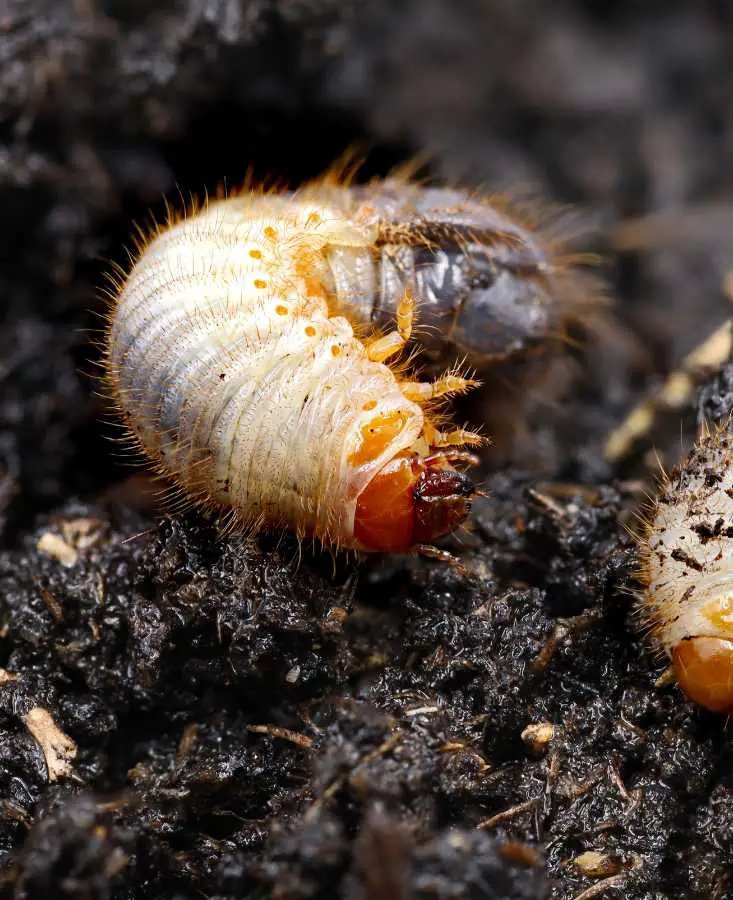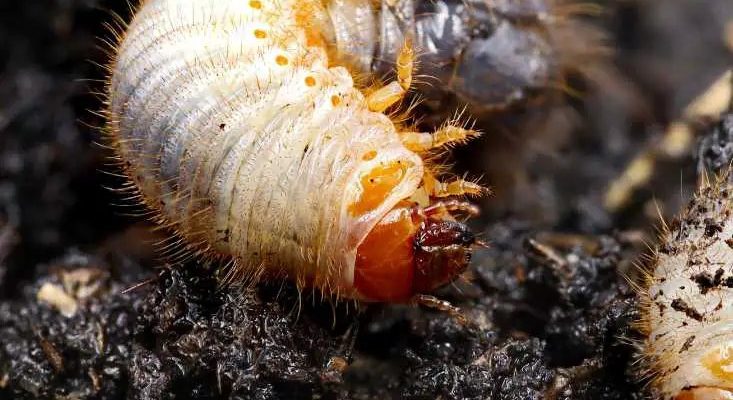
Grub worms, also known as larvae of beetles, often pop up in organic matter, and their presence can leave many gardeners scratching their heads. Let’s dive into what these little critters are all about. Are they friends helping your compost thrive, or foes eating away at your hard work?
What Are Grub Worms?
Grub worms are the juvenile stage of various types of beetles, most notably the June beetle. They usually have a C-shaped body, creamy white color, and a soft texture. You might find them wriggling around in your compost, munching on organic matter. While they may remind you of creepy-crawly pests, they actually play a significant role in the composting process.
Typically, adult beetles lay their eggs in soil or compost, and those eggs hatch into grub worms. From there, they feast on decomposing material, breaking it down and enriching the soil. So, in a way, grubs are like tiny composting machines—working diligently to create that lovely, nutrient-rich humus your garden craves.
Are Grub Worms Beneficial in Compost?
Honestly, the short answer is yes! Grub worms can be beneficial to your compost pile. Here’s why:
1. Natural Decomposers: Grub worms help break down organic matter, contributing to the overall composting process. They speed up decomposition, meaning your compost can turn into rich soil faster than it would without them.
2. Soil Aeration: As they move through the compost, they create tiny tunnels. These tunnels enhance airflow, promoting aerobic bacteria that are essential for healthy compost.
3. Nutrient Contribution: When grubs feast on decomposing materials, they help release nutrients into the compost. This nutrient-rich compost can later nourish your garden, leading to healthy plants.
Grub worms are often seen as a sign that your compost is active and thriving. So, don’t be too quick to shoo them away!
When Grub Worms Become a Problem
Despite their benefits, there are times when grub worms can cause issues in your compost pile. Let me explain:
1. Overpopulation: If you see a large number of grubs, it might mean that your compost is too rich in greens, like vegetable scraps and grass clippings. Too many greens can lead to a high nitrogen level, which attracts more grubs. Adjusting the balance with more brown materials, like dry leaves or cardboard, can help.
2. Attracting Pests: A high concentration of grubs can attract other pests, including adult beetles, which might lay more eggs in your compost. This could lead to even more grubs, creating an unwanted cycle.
3. Compacting Material: A lot of movement in the compost (thanks to those grubs!) can compact materials, slowing down the decomposition process instead of aiding it. Make sure to aerate your compost regularly to avoid this.
You might be wondering how to keep the grub population balanced.
How to Manage Grub Worms in Your Compost
Managing grub worms doesn’t have to be a headache. Here are a few tips:
1. Balance Greens and Browns: Aim for a balanced mix of ‘greens’ (like food scraps) and ‘browns’ (like dried leaves). A good rule of thumb is to use about three parts brown materials to one part green.
2. Aeration: Turn your compost regularly. This helps break up compacted materials and introduces oxygen. The grubs thrive in well-aerated compost, too.
3. Monitor Moisture: Keep your compost pile moist, but not soggy. If it’s too wet, it can create a perfect environment for grubs to multiply quickly. Check the moisture level by grabbing a handful—if it holds together but doesn’t drip water, you’re in good shape.
By following these tips, you can enjoy the benefits of grub worms without letting them take over your compost.
Alternatives to Grub Worms: What Else Can Help Your Compost?
If you’re still uneasy about grub worms, you might want to consider some alternatives that can also benefit your compost. Here are a couple of options:
1. Red Wigglers: These are the darling of the composting world! Red wigglers are great for indoor composting or worm bins. They’re champions at breaking down food scraps and producing nutrient-rich worm castings.
2. Microorganisms: Beneficial bacteria and fungi also play a critical role in composting. You can add materials like finished compost, soil, or a compost starter to boost the microbial activity in your pile.
While grub worms can contribute to composting, exploring these alternatives can provide added benefits and peace of mind.
To wrap it up, grub worms in compost piles aren’t necessarily a bad thing. They’re like small workers, aiding in breaking down organic material and enriching the soil. But it’s essential to keep an eye on their population and manage your compost accordingly. A balanced mix of greens and browns, regular aeration, and proper moisture levels can help create an ideal environment for both grubs and beneficial microorganisms.
So the next time you spot those wriggling little grubs, remember they’re part of a larger ecosystem at work in your compost. Embrace them, but don’t forget to keep their numbers in check! Happy composting!

